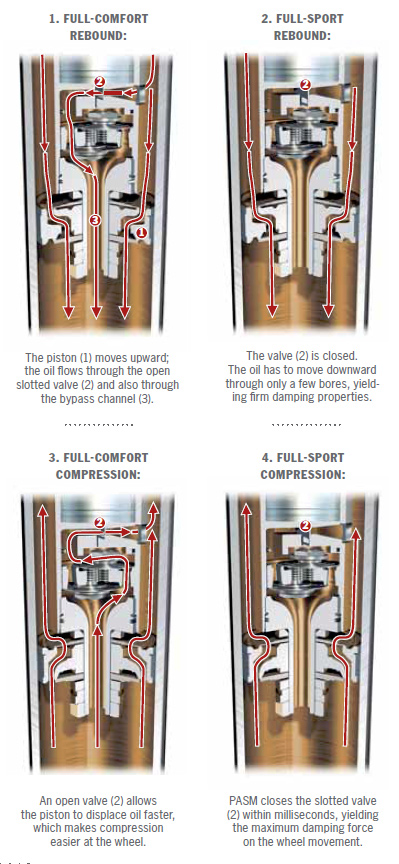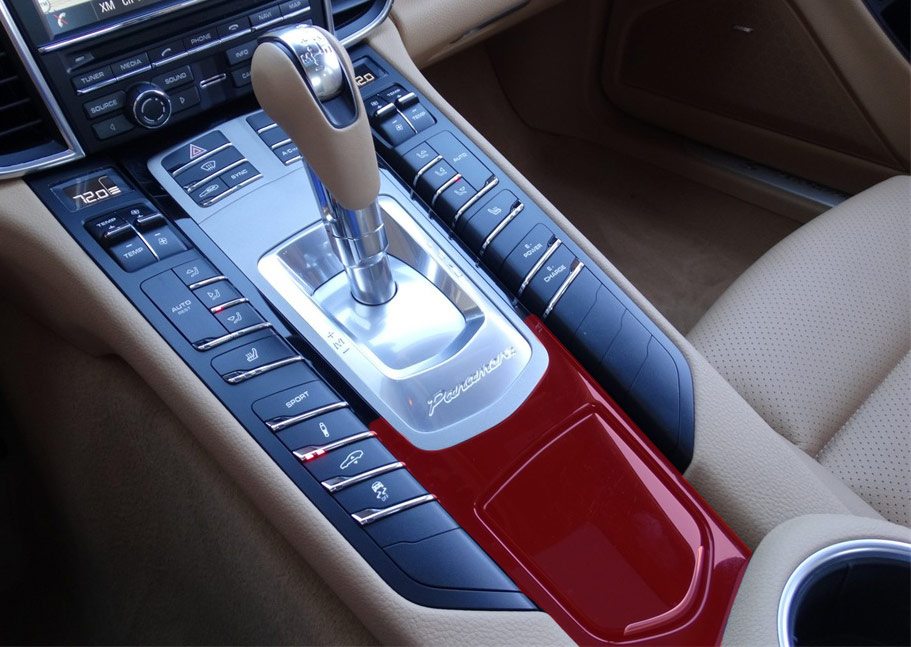When you press the PASM / Suspension (little shock picture) button, the Porsche tightens its muscles and moves from being a jogger to a sprinter or a marathon runner, depending on the vehicle and the driver’s desire. With every press of the button, drivers can change the tuning of their active shock absorber system, thanks to the Porsche Active Suspension Management, or PASM .
Pressing the button triggers a chain reaction. The PASM control unit starts by seeking the right control map— Normal or Sport, or also Comfort for the Panamera and the Cayenne. Then it asks its sensor network how the car is being driven right then. The control unit uses that information to determine
[sociallocker]
how the shock absorbers should be adjusted. They are the true heroes of PASM —hydraulic vibration dampers, whose properties can be changed within milliseconds.
Conventional shock absorbers have a thank-less task. If tuned for comfort, the swaying and rocking motion displayed by the vehicle in fast curves will quickly rob the driver of driving pleasure. Firmly tuned dampers, on the other hand , offer sports-car dynamics but quickly elicit groans from passengers at every bump in the road. One may settle for any compromise between the two, but both at once is not an option. A PASM shock absorber, however, can do everything: hard, soft, sports-oriented, or comfort-oriented damping as well as every nuance in between.
Here’s a brief look at the physics. Conventional shock absorbers these days use a uniform principle: a piston connected to the car body via a piston rod moves in an oil-filled cylinder attached to the wheel suspension. With every movement oil is pressed through bores in the piston , which brakes it—and enables it to absorb shocks. If only a small volume of oil can flow through narrow bores, the damping effect is firm. If the bores allow greater throughput , the damper has soft and comfort-oriented characteristics.
Active PASM dampers can modify the oil flow. They do this by means of a bypass channel featuring an electrically actuated valve that opens, continuously narrows, or closes the channel within milliseconds. The control unit can continuously regulate the valve adjustment on each wheel in order to best meet the driving needs at any instant.
By pressing the PASM (little picture of the shock) button, drivers tell the control system regulating all four shock absorbers which type of tuning they desire. The system’s heart is the piston (below) with an integrated adjustable slotted valve. Continuously adjusted by a control motor, it regulates oil flow into the centrally located bypass channel.
[/sociallocker]














